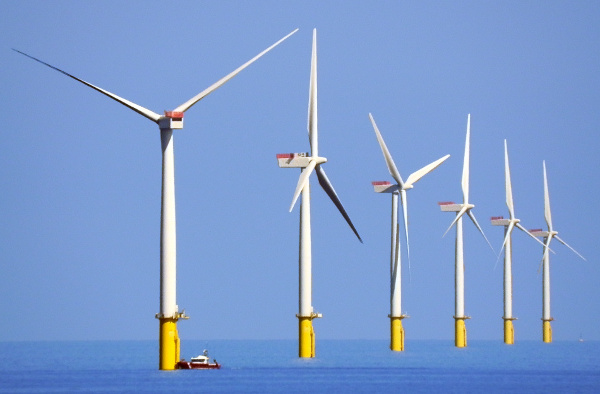What's So Great About Wind?
The Dogger Bank Wind Farm is located off the coast of northeast England in the North Sea. It’s set to have a total capacity of 3.6 GW, and when it’s up and running it will be able to power millions of homes per year. People working on the project have dubbed it “the world’s largest offshore wind farm.”
SSE Renewables is overseeing the construction and delivery of the facility along with Equinor. If all goes to plan, its Dogger Bank C’s turbines will be installed in 2025 and the entire project will be completed a year later in 2026. This final phase of the project is expected to use 14-megawatt versions of GE Renewable Energy’s huge Haliade-X turbine. In a recent announcement, GE (NYSE: GE) said a service and warranty contract has been finalized.
The Dogger Bank C will use 87 of GE’s Haliade-X 14 MW turbines and is expected to have a capacity of 1.2 gigawatts. Dogger Bank C will accompany Dogger Bank A and Dogger Bank B, which will use 190 of GE’s Haliade-X 13 MW turbines. This makes the U.K. home to a mature offshore wind sector that has plans to expand in the coming years.
The U.K.’s prime minister, Boris Johnson, claims that offshore wind power will power every home in the country by 2030. He aims to have the U.K. become the “world leader in low-cost clean power generation.” While at the Conservative Party annual conference, Johnson spoke of the importance of renewable energy sources, emphasizing offshore wind:
We believe that in 10 years’ time, offshore wind will be powering every home in the country, with our target rising from 30 gigawatts to 40 gigawatts.
You heard me right: Your kettle, your washing machine, your cooker, your heating, your plug-in electric vehicle, the whole lot of them will get their juice cleanly and without guilt from the breezes that blow around these islands.
The U.K. has been working hard to ramp up its efforts at becoming a leader in wind power. So what may seem ambitious could actually be a reality for the country and how it generates power. Not to mention that it is creating jobs for the country, so it makes sense that U.S. is also attempting to ramp up its efforts in wind energy.
 According to a report by Research and Markets, the global wind turbine market was valued at $90.114 billion in 2019 and is expected to grow at a CAGR of 5.34% over the forecast period to reach a total market size of $123.154 billion in 2025. Renewable power generation is something that most nations are working to obtain and incorporate into their budgets because it will help them meet their sustainable development goals and targets to achieve clean, reliable, secure, and affordable energy. Most nations are on board with reaching environmental sustainability because they are aware that it needs to be done now to combat climate change.
According to a report by Research and Markets, the global wind turbine market was valued at $90.114 billion in 2019 and is expected to grow at a CAGR of 5.34% over the forecast period to reach a total market size of $123.154 billion in 2025. Renewable power generation is something that most nations are working to obtain and incorporate into their budgets because it will help them meet their sustainable development goals and targets to achieve clean, reliable, secure, and affordable energy. Most nations are on board with reaching environmental sustainability because they are aware that it needs to be done now to combat climate change.
The U.S. will need to catch up with Europe when it comes to wind turbines and generating power from wind. The U.K. has been working on their offshore wind farm for years now, and in the U.S. there have only been debates about if that type of power generation would be beneficial to the country or if it’s even considered safe and viable. America’s first offshore wind facility, the 30 MW Block Island Wind Farm that’s located off of Rhode Island, started its commercial operations in late 2016.
However, the U.S. did recently leap forward after authorities gave the green light for the construction and operation of the 800 MW Vineyard Wind 1 project that will be located off the coast of Massachusetts. The U.S. Department of the Interior has described the development as “the first large-scale offshore wind project in the United States.”
President Joe Biden’s administration is hoping for offshore wind capacity to hit 30 gigawatts by 2030 so that it can not only align the U.S. with other nations investing in wind energy but also help build up the U.S. by generating thousands of jobs and unlocking billions of dollars in investment in the upcoming years. The investment into wind energy and other sustainable development will greatly benefit the U.S. and the world, and only a few companies will become the market leaders.
Until next time,
Jennifer Clark
Pro Trader Today
Array